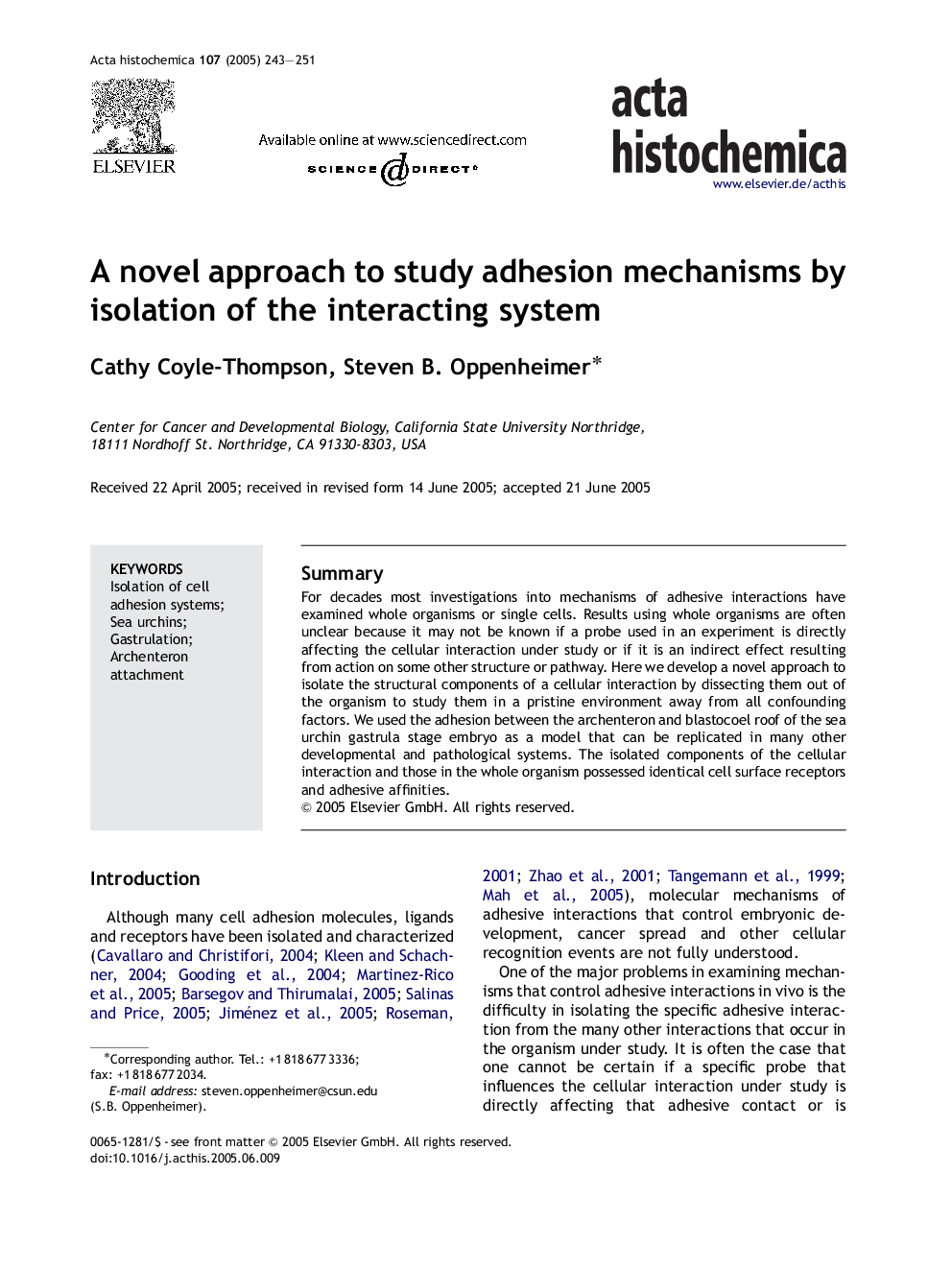| Article ID | Journal | Published Year | Pages | File Type |
|---|---|---|---|---|
| 10747392 | Acta Histochemica | 2005 | 9 Pages |
Abstract
For decades most investigations into mechanisms of adhesive interactions have examined whole organisms or single cells. Results using whole organisms are often unclear because it may not be known if a probe used in an experiment is directly affecting the cellular interaction under study or if it is an indirect effect resulting from action on some other structure or pathway. Here we develop a novel approach to isolate the structural components of a cellular interaction by dissecting them out of the organism to study them in a pristine environment away from all confounding factors. We used the adhesion between the archenteron and blastocoel roof of the sea urchin gastrula stage embryo as a model that can be replicated in many other developmental and pathological systems. The isolated components of the cellular interaction and those in the whole organism possessed identical cell surface receptors and adhesive affinities.
Keywords
Related Topics
Life Sciences
Biochemistry, Genetics and Molecular Biology
Biochemistry
Authors
Cathy Coyle-Thompson, Steven B. Oppenheimer,
